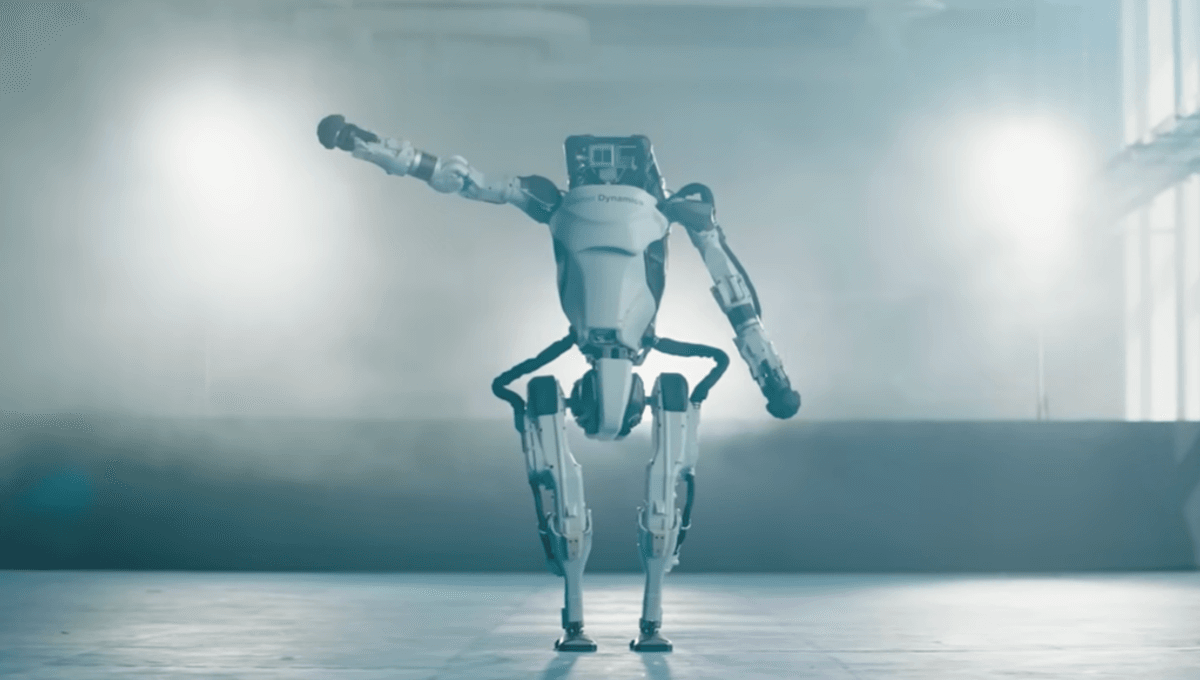
After years of breaking boundaries, Boston Dynamics is retiring its hydraulic robot Atlas. To say farewell, the pioneering company has put together a video montage of the mechanoid marvel’s best moments, including cheesy dance moves, acrobatic flips, and a few fails.
“For almost a decade, Atlas has sparked our imagination, inspired the next generations of roboticists, and leapt over technical barriers in the field. Now it’s time for our hydraulic Atlas robot to kick back and relax,” Boston Dynamics said in a video posted on April 16.
“Take a look back at everything we’ve accomplished with the Atlas platform to date,” they added.
Atlas was created for the Defense Advanced Research Projects Agency (DARPA) – the high-impact, advanced-technology branch of the Pentagon – by Massachusetts-based robotics company Boston Dynamics. It started as part of a prize competition that hoped to super-charge the development of a humanoid robot that could assist in search and rescue operations.
When Atlas made its public debut in 2013, it had to be tethered to help its stability and was merely capable of walking in a straight line. Well, just about.
“A 1-year-old child can barely walk, a 1-year-old child falls down a lot. As you see these machines and you compare them to science fiction, just keep in mind that this is where we are right now,” Gill Pratt, a program manager at DARPA involved in Atlas’s design and financing, told the New York Times in 2013.
Much has changed since then. Over the years, the robot’s hardware and software have been finely tuned by the brains at Boston Dynamics, allowing it to perform physical feats that most humans would struggle with.
The latest incarnation of Atlas stands at 150 centimeters (just under 5 feet) tall and weighs 89 kilograms (196 pounds). Using its 28 hydraulic joints, it’s capable of running at speeds of up to 2.5 meters (over 8 feet) per second, along with performing somersaults, athletic jumps, and 360° spins.
It’s also armed with a bunch of sensors that are used to perceive the surrounding environment in real-time and react accordingly. For instance, if you place a hurdle in front of the robot’s course, it will recognize the problem and traverse it. Shove it with a pole and it will gracefully adjust its body to remain standing.
Boston Dynamics didn’t explain why they’re shelving their legendary robot. Some commentators have suggested the company is making way for another new product, while others have wondered whether Atlas has become an economic burden. Although the company’s other products, such as its dog-like robot Spot, have been sold to various companies for numerous applications, Atlas was never put on the market.
As highlighted by IEEE Spectrum, the statement from Boston Dynamics states that “the hydraulic Atlas robot” is being put into retirement. Does this mean a non-hydraulic Atlas robot is next on the agenda? At the moment, it’s anyone’s guess.
Who knows what’s next for the bots of Boston Dynamics – let’s just hope it’s not a robot uprising.
Source Link: Boston Dynamics Puts Its Atlas Robot Into Retirement: Here Are Its Best Moments